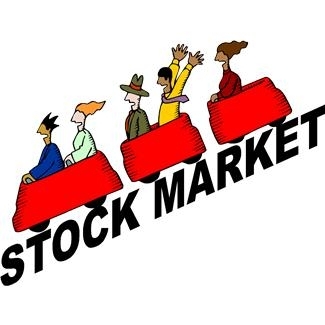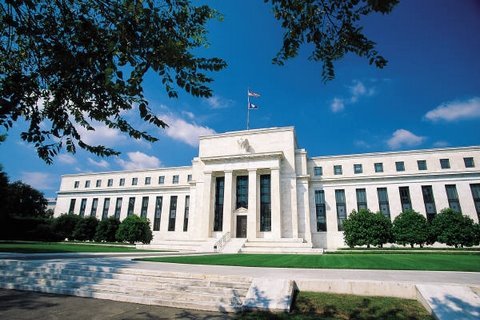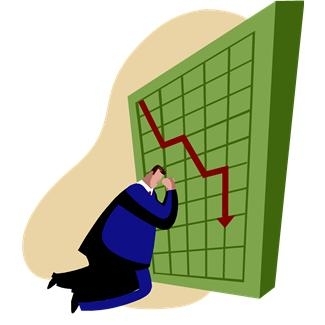| Home | About | Archives | RSS Feed |

@theMarket: Highway to the Danger Zone
|
"Highway to the Danger Zone
I'll take you Right into the Danger Zone" — Kenny Loggins from the movie "Top Gun"
|
One would think that the world is coming to an end. By Friday morning every headline, every opening sound bite on television and on the radio began with the massive declines experienced by world stock markets this week. Take all this with a grain of salt.
"You never bet on the end of the world," said Art Cashen, the experienced Wall Street veteran and director of floor services for UBS. "That only happens once and the odds of something happening once an eternity are pretty long."
 I respect Art and agree with his prognosis. Readers get a grip. This is a correction, a nasty decline for sure, and will, by the end, take away as much as half of the gains you have made since March, 2009. But remember, even if you are still one of those buy and hold, hold-out investors, you are still up 50 percent from the lows.
I respect Art and agree with his prognosis. Readers get a grip. This is a correction, a nasty decline for sure, and will, by the end, take away as much as half of the gains you have made since March, 2009. But remember, even if you are still one of those buy and hold, hold-out investors, you are still up 50 percent from the lows."But I'm still underwater from what I had in 2007," laments one reader from Connecticut.
For years I have been imploring readers to find a money manager or broker who does not believe in holding a portfolio through thick and thin. It is a recipe for disaster, in my opinion, that only works during certain specific time periods. The first 20 years of this, the 21st century, is not one of those periods. The problem is that only a small handful of investment advisers (less than 5 percent) within the financial services community actually buy and sell. But since it's your money, I would urge you to do the work and find one.
It may not be the end of the world, but at the same time I am not discounting the risks that face us. We are truly accelerating down the highway into an economic danger zone. The continuing weakness in our own economy, the very real possibility of a European bank failure and Greek default, a hard landing in China, plus another half-dozen potential mind fields does not give one a high degree of comfort. When one acknowledges that we lack the leadership, both here and abroad, to handle this dogfight, even Maverick and Goose might panic.
Instead, it is a time to stay calm and focused. Remember, I was here for you through 2008-2009 and if you followed my advice then you did very well. And I'm here for you now.
No one who reads this column consistently should be surprised with the market's recent declines. In last week's column, John Roque, my friend and one of the best technical analysts on Wall Street, clearly indicated that he thought that a decline to 950 on the S&P 500 Index was a strong possibility. I agree with him wholeheartedly. Yet, even at 950, I don't believe it is the end of the world as we know it.
It also does not mean that stocks must go straight down to that 950 level. I expect there will still be some ferocious rallies to the upside, like we experienced the week before last, where the indexes gained 6-7 percent in three days. I advised investors to sell those rallies. If you haven't already taken my advice and reduced your equity holdings, do so on the next bounce and move into cash or bonds.
Some retired investors need to remain in dividend-paying stocks because they are dependent on the income to make ends meet. If you are in that category, then please consider hedging those holdings with covered put options or inverse exchange traded funds.
On a short-term basis, the markets are oversold. I would not be surprised to see another bounce ahead of us but it does not change the overriding trend, which is down, act accordingly.
Bill Schmick is an independent investor with Berkshire Money Management. (See "About" for more information.) None of the information presented in any of these articles is intended to be and should not be construed as an endorsement of BMM or a solicitation to become a client of BMM. The reader should not assume that any strategies, or specific investments discussed are employed, bought, sold or held by BMM. Direct your inquiries to Bill at (toll free) or e-mail him at wschmick@fairpoint.net . Visit www.afewdollarsmore.com for more of Bill's insights.
@theMarket: Sitting This One Out
 Trading in the stock market right now is akin to having your pocket picked by a blind man whose pocket you just picked a moment ago. In other words, get to the sidelines if you aren't already there.
Trading in the stock market right now is akin to having your pocket picked by a blind man whose pocket you just picked a moment ago. In other words, get to the sidelines if you aren't already there.
Gapping up and then down to the tune of 1 or 2 percent a day is not my idea of an investable market. And just about every day this week we have witnessed this sort of schizophrenic behavior. Those, for example, who may have been feeling pretty good about catching the market just right last week, have watched all their gains disappear.
This week the game was to sell the market down early Sunday night into Monday morning, then buy the lows, rally back up until Fed Chairman Ben Bernanke spoke on the economy on Wednesday, take profits after that, then rally back, in anticipation of President Obama's speech on Thursday night. But since no one really thinks the president will have much of a chance getting another stimulus plan through Congress, traders went short the market before the speech. Friday, of course, was a big down day.
Don't think you can outwit the pros in this game because most of the action is occurring prior to the U.S. market opening. By the time you get to put an order in to buy a stock or ETF, you are already chasing the price. And who do you think is selling this security to you? You guessed it, the prop trading desk that purchased it early in the morning in Europe or Asia. As the markets become even more volatile, traders are increasingly focusing on buying before the U.S. open, selling in the opening hour of U.S. trade, buying back when Europe closes at midday, and selling or buying again around 2:30-3 p.m.
I've watched in amusement as the talking heads on television change their minds about the market on a daily basis, based on whatever the averages are doing on a given day. First they are bullish, then bearish. They like the financials and then they don't. Wouldn't it be nice if they just back off and admit they haven't a clue about what is going on? At least that would be truthful and honest.
In markets like this, where the fundamentals are practically impossible to discern, most traders rely on technical analysis. Buy at support, sell at resistance — seems easy — but in today's markets that concept has taken on an entirely new meaning. It is possible, thanks to computers, algorithms and software programs to identify technical levels to buy and sell on a daily, hourly or even minute-by-minute basis.
Make no mistake; you can make a lot of money doing that if you are on the right side of the market. The problem is most individual investors are completely outgunned, with none of the technology the big guys have to guide them in this exercise. You can lose a lot of money in a market like this. That is why I have advised all my readers to move to the sidelines and wait this out.
"But how long will this go on?" exclaimed one frustrated client.
The glib answer is as long as it takes. September and October are normally the worst months of the year for stocks, and so far that has turned out to be true. Europe and its problems are still very much in the forefront of investors' attention. Sadly, the news from across the pond continues to be discouraging. There are even public comments from some of the EU countries that Greece should be forced to exit the Euro. That is something that only two months ago no European leader would dare to say.
Over here, things are not much better. If we aren't already in a recession, we are within a hair's breadth of a long-feared double dip. Much will depend on what comes out of Washington and so far the news is not encouraging. Obama's $447 billion stimulus plan announced Thursday night was simply more of the same policies that have already proven to have no lasting impact on economic growth or unemployment.
Whether or not the GOP will go along with part of this plan remains to be seen. But the market has already given its verdict — it's not nearly enough — which leaves the Federal Reserve and its upcoming meeting on Sept. 20 to save the day. I'm stunned at how much weight the market is giving to this meeting.
Are we setting ourselves up for an even bigger fall? Will there be a QE III and if so will it actually do any good? I wish I knew, but at least I'm honest enough to admit that I don't know. And when I don't know I move to the sidelines, comprende?
Who said finance is boring?
Bill Schmick is an independent investor with Berkshire Money Management. (See "About" for more information.) None of the information presented in any of these articles is intended to be and should not be construed as an endorsement of BMM or a solicitation to become a client of BMM. The reader should not assume that any strategies, or specific investments discussed are employed, bought, sold or held by BMM. Direct your inquiries to Bill at (toll free) or e-mail him at wschmick@fairpoint.net . Visit www.afewdollarsmore.com for more of Bill's insights.
@theMarket: Fed Passes the Ball to Congress
 By now everyone knows the outcome of Ben Bernanke's speech at Jackson Hole on Friday. For those looking for a cure-all from the chairman of the Federal Reserve, his speech was a disappointment.
By now everyone knows the outcome of Ben Bernanke's speech at Jackson Hole on Friday. For those looking for a cure-all from the chairman of the Federal Reserve, his speech was a disappointment.
Overall, the markets were not nearly as disappointed as one might imagine. I suspect the smart money (see Thursday's column "Can the Fed Save the Markets") was not expecting much in the way of new programs. Of course, Chairman Bernanke promised to take another look at the economy on Sept. 20, when next the FOMC meets, but don't hold your breath.
Although the Fed still has some tools it could use if necessary, the Fed is not omnipotent when it comes to stimulating the economy. There is, of course, quite a bit that Congress, the Senate and the White House could do and the chairman made it clear that the ball was now in their court. He also warned those who are hell bent on cutting spending in congress to be careful what they vote for. He warned that the economy is as fragile as an egg shell right now.
To underscore that point, the second-quarter GDP was revised down again on Friday to only 1 percent from 1.3 percent just a few weeks ago. At that rate, we are teetering between a recession or sub-par growth. I still give a double-dip recession less than a 50 percent chance, in my opinion, but more ineptitude in Washington or a new, negative shock from Europe could tip us over the edge.
The stock market is at an extremely precarious level right now. The averages could go either way, but I believe there is still more downside risk than upside potential over the next few weeks. As a result I remain defensive and nothing that I have seen this week has changed my mind.
Some investors were encouraged when Warren Buffet announced he was taking a multibillion dollar stake in Bank of America. Yet investors should remember that Buffett is a long term investor and is not fazed if the prices of stocks he invests in subsequently go lower, in some cases, much lower, before finally rebounding. And in some cases, his investments do not pan out at all.
I would continue to use any rallies to reduce your most aggressive equity holdings and instead focus on dividend and income investments. Now, even the Fed is looking to our dysfunctional government leaders for new initiatives to reduce unemployment and increase economic growth and that does not give me a warm, fuzzy feeling.
The stock market is in the middle of a bounce right now and I expect that both volatility from Europe and additional selling pressure from concerned investors will drive the averages back to their recent lows. There is a high probability that those lows will fail to hold.
As for this weekend's arrival of Hurricane Irene on the East Coast, experts are predicting that it could cost billions in damages not to mention loss of life. Hurricane Katrina was considered one of the costliest natural disasters to hit America in years. It caused $125 billion in damages and lopped 0.05 percent off the nation's GDP. Let's hope and pray that Irene does not prove to be that bad. The last thing we need is another economic catastrophe. But as the saying goes, when it rains, it pours.
Bill Schmick is an independent investor with Berkshire Money Management. (See "About" for more information.) None of the information presented in any of these articles is intended to be and should not be construed as an endorsement of BMM or a solicitation to become a client of BMM. The reader should not assume that any strategies, or specific investments discussed are employed, bought, sold or held by BMM. Direct your inquiries to Bill at (toll free) or e-mail him at wschmick@fairpoint.net . Visit www.afewdollarsmore.com for more of Bill's insights.
| Tags: Fed, recession, weather |
Independent Investor: Can the Fed Avert Another Selloff?
 The safe bet would be to write about something else because by the time you read this Federal Reserve Bank Chairman Ben Bernanke will have already given his speech in Jackson Hole, Wyo., scheduled for Friday morning. I'm betting that whatever he says won't be enough to save the stock market from further decline.
The safe bet would be to write about something else because by the time you read this Federal Reserve Bank Chairman Ben Bernanke will have already given his speech in Jackson Hole, Wyo., scheduled for Friday morning. I'm betting that whatever he says won't be enough to save the stock market from further decline.
The stock market has been climbing over the last week in anticipation that the Federal Reserve will, like last year, announce another monetary stimulus program similar to QE II. There are several problems in betting on that outcome in my opinion.
No. 1 is investor's knee-jerk expectation that the government will save the stock market every time we have a selloff of 10 percent or better. We have become conditioned to expect some sort of governmental intervention ever since the 2008-2009 financial crises. That's when the TARP Plan was passed, followed by the stimulus plan, the extension of the Bush tax cuts and the cut in payroll taxes, not to mention last year's QE II announcement almost exactly a year ago today.
The second problem is that the Fed has already done quite a bit to stimulate the economy with mixed results. Their announcement of just a few weeks ago that they will keep interest rates low until mid-2013 is actually an extension of QE II, (call it QE 2 1/2). I doubt that they will be willing to move much beyond their present efforts until the economic data clearly indicates further weakening.
There has been some talk that the Fed might change its focus from buying short-term U.S. Treasury bonds to buying long-term U.S. Treasury bonds. I am at a loss to understand why they would want to do that. Lowering long-term rates would theoretically make borrowing cheaper. An implicit assumption is that lower rates would encourage long-term investment in plant and equipment. The problem with that theory is that large corporations already have record amounts of cash to invest but are still not investing in long–term projects. They believe there is simply too much uncertainty within our political system, our regulatory environment and in the economy to warrant additional investment right now.
As for smaller corporations, those that represent the majority of America’s work force, only those businesses that don’t really need to borrow are eligible for loans. It is not the level of interest rates that prevent banks from lending. It is the uncertainty that loans to small businesses will be paid back that has created an almost complete cessation of new lending in that arena. It has already been shown (via QEII) that banks are not willing to lend no matter how low rates fall.
In any case, it is not our economy that has been driving markets lower. The financial problems in Europe are what have most investors spooked. Make no mistake, Europe's problems are serious and their leaders have yet to come up with a decisive, comprehensive plan to deal with their financial problems. The Fed's actions here won't resolve the problems on the other side of the Atlantic.
In summary, unless the Fed pulls a bull-sized rabbit out of their hat tomorrow, the markets will swoon. Let's see what happens.
Bill Schmick is an independent investor with Berkshire Money Management. (See "About" for more information.) None of the information presented in any of these articles is intended to be and should not be construed as an endorsement of BMM or a solicitation to become a client of BMM. The reader should not assume that any strategies, or specific investments discussed are employed, bought, sold or held by BMM. Direct your inquiries to Bill at (toll free) or e-mail him at wschmick@fairpoint.net . Visit www.afewdollarsmore.com for more of Bill's insights.
| Tags: QEII, Fed, sell off |
@theMarket: Where Is the Bottom?
 Everyone seems to be looking for the same thing, an end to the pain, an end to the stress, a place where the selling stops. It's called a bottom and it appears to me that we haven't found one yet.
Everyone seems to be looking for the same thing, an end to the pain, an end to the stress, a place where the selling stops. It's called a bottom and it appears to me that we haven't found one yet.
One contrary indicator is the sheer number of bottom fishers who are trying to outguess each other on how low the markets can go. Normally bottoms are reached when no one wants to buy and everyone believes the markets are never, ever coming back. So far, I have seen no evidence that investors are in that state of mind.
This has been a waterfall decline and as such, one can look back through history and see how markets have reacted to past selloffs of this type. If you haven't read my Aug. 11 column, "What To Expect From After a Waterfall Decline" please be sure to read it.
Over the last two weeks, the market declined to about 1,100 on the S&P 500 Index and then proceeded to bounce 9.5 percent to about 1,204. Many think that was the bottom. But was it? I looked at some historical data on past waterfall declines, compliments of Ned Davis Research, a highly respected financial firm, hoping to confirm or deny that supposition.
I found that in 8 of 11 post-waterfall decline cases since 1929, the market has made lower lows. So far this decline has been a textbook waterfall decline. They all begin with a breath-taking whoosh downward, find an interim bottom, (in this case S&P 1,100) and proceed to bounce about 10 percent to an interim peak. Our rally this week to 1,204 was about 9.5 percent and would certainly seem to qualify as an interim peak.
Eventually this interim peak is followed by a decline to the final bottom, which in past declines have averaged about 14 percent to 16 percent. That would put the S&P 500 Index at around 1,020. But that is an average decline. If you look at waterfall declines that were caused by debt-related fears such as in 2008, 1940, 1937, 1938 and 1929, then, the bottoms were a good 10-15 percent lower than the average.
Now that does not mean that this decline must replicate past performances. And remember, too, that this type of bottom occurred in 73 percent of the cases since 1929. Therefore, 2011 could turn out differently. My intention is neither to frighten readers nor to call the bottom but rather to give you an idea of what has happened in the past and give you a framework for future risk/reward. At the very least, I would think that there is sufficient historical data to reframe from jumping into the market again at some arbitrary number whether it be 1,100, 1,075 or 1,020.
Bottoms are rarely V-shaped. There is usually a basing period of several months where the markets trade up and down, testing the lows until a sufficient amount of evidence convinces investors to get back in the market. The sectors that perform the best in a basing/testing period are health care, energy, consumer staples, telecom and utilities. Once the market bottom is in, then the sectors with higher betas such as technology, consumer discretionary, financials and industrials outperform.
Bill Schmick is an independent investor with Berkshire Money Management. (See "About" for more information.) None of the information presented in any of these articles is intended to be and should not be construed as an endorsement of BMM or a solicitation to become a client of BMM. The reader should not assume that any strategies, or specific investments discussed are employed, bought, sold or held by BMM. Direct your inquiries to Bill at (toll free) or e-mail him at wschmick@fairpoint.net . Visit www.afewdollarsmore.com for more of Bill's insights.
| Tags: decline, waterfall, bottom, history |

